Archivo de noticias y eventos
251 - 300 de un total de 2407
También puede acceder a la lista de noticias publicadas en los medios relacionadas con el Instituto de Astrofísica de Andalucía - CSIC.
Pages

|
14/09/2023 - 12:30
X-ray emission from Symbiotic Stars: a stellar window to the Astrophysics of AGN Symbiotic stars (SySts) are binary systems in which a white dwarf (WD) accretes material from a red giant star. X-ray studies of SySts reveal an apparent variety of processes which would suggest different origins. In this talk I will briefly review our current knowledge of the X-ray properties of SySts (their classification and physical parameters), in particular I will describe the iconic systems R Aqr and CH Cyg. Finally I will present our... Dr. Jesús Toalá |

|
09/10/2023 - 12:30
SO Colloquium: The demographics of small exoplanets The diversity of the exoplanet population is beyond our imagination. The more than 5000 known exoplanets vastly differ in mass, size, orbital period, dynamics, and host type. Demographic studies, however, aim to find patterns in the population that inform us about their origin, composition, and evolution. Among these features, perhaps the most surprising is the abundance of planets with no analog in the solar system, also known as sub-Neptunes.... Dr. Rafael Luque |

|
16/11/2023 - 12:30
SO Colloquium: The evolution of the accretion process: investigating the protostellar phase to constraints planet formation The accretion process is responsible for the mass building during the star formation phase, but our knowledge of this phenomenon is still not totally understood. On one side, the magnetospheric accretion scenario describes the accretion on pre-main sequence (Class II/III) low-mass stars. However, most of the material is supposed to be accreted during the earliest stages, i.e. the protostellar phase (Class 0/I), when the forming star and its disk... Dr. Fiorellino, Eleonora |

|
09/10/2023 - 11/10/2023
https://www.iaa.csic.es/meetings/sophi-team-meeting Granada |
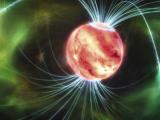
|
05/09/2023
Se obtiene la primera imagen detallada de un cinturón de radiación fuera del Sistema Solar Ha sido detectado en torno a una enana marrón, un tipo de subestrella fría y de baja masa. Publicada en Science, la imagen evoca los conocidos cinturones de la Tierra y Júpiter y revela un campo magnético diez veces superior al del Júpiter, así como intensas auroras polares |
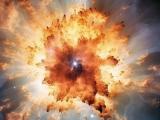
|
01/09/2023
NIRS3: la protoestrella que muestra cómo crecen las estrellas gigantes El Instituto de Astrofísica de Andalucía (IAA-CSIC) encabeza el análisis más nítido de esta protoestrella masiva en formación, que sugiere que alterna episodios recurrentes de acumulación y expulsión de material |
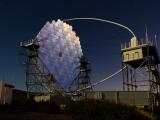
|
02/08/2023
Observaciones de la Nebulosa del Cangrejo confirman el excepcional desempeño del primer telescopio LST del Observatorio CTA Con más de sesenta telescopios situados en ambos hemisferios, el Observatorio CTA será el principal observatorio de rayos gamma durante las próximas décadas. El Instituto de Astrofísica de Andalucía (IAA-CSIC) participa en el proyecto y en el artículo sobre el desempeño del telescopio LST-1, un hito en el proyecto |
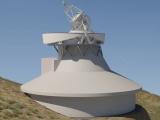
|
25/07/2023
El IAA-CSIC y el IAC participan en la creación de la Fundación Canaria Telescopio Solar Europeo Nueve instituciones de siete países europeos han firmado hoy las escrituras de esta entidad, que allana el camino hacia la futura construcción del Telescopio Solar Europeo (EST). Uno de los principales objetivos de EST reside en mejorar la comprensión del Sol mediante la observación de sus campos magnéticos con un detalle sin precedentes |

|
11/07/2023 - 13/07/2023
https://www.granadacongresos.com/refsh?fbclid=IwAR0bl7jxUevZ_ohUT6wdE3CrxZ3gQATl… Granada |

|
24/10/2023 - 13:00
The Galactic Center seen with MeerKAT During its inauguration, the MeerKAT released, to date, the most detailed image of the centre of the Galaxy at L-band (1.28 GHz). Since then, the data have been exploited for various scientific research. One such exploitation was to produce a high resolution mosaic of the Galactic centre. From this mosaic came a catalogue of newly discovered unresolved point sources. Over 1500 sources were identified, of which 20 are steep spectrum point... Dr. Isabella Rammala |

|
07/11/2024 - 12:30
SO Colloquium: The tidal arms of open star clusters are much longer than thought, but more difficult to find The tidal arms of stellar clusters are an important tool for studying the clusters’ birth conditions, their evolution, coupling, and interaction with the Galactic potential. They also help understand how field stars populate the Milky Way. Thanks to Gaia, much progress has been accomplished in finding the tidal arms of open clusters. I will show here that such arms are much longer than previously observed, and that their identification requires... Dr. Henri Boffin |

|
28/06/2023
Las emisiones de varios compuestos oceánicos enfrían el clima, pero no compensan el calentamiento El Instituto de Astrofísica de Andalucía (IAA-CSIC) participa en un estudio que destaca la influencia de una serie de compuestos que emite el océano en el clima terrestre. El equipo científico, que incide en que este efecto no contrarresta el calentamiento producido por las emisiones humanas, destaca la necesidad de incluirlo en los modelos climáticos para mejorar sus predicciones |
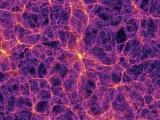
|
28/06/2023
Las galaxias en los grandes vacíos del universo crecen más despacio que el resto El IAA-CSIC participa en un estudio que muestra por primera vez de manera observacional que las galaxias en las regiones poco densas del universo evolucionan más despacio que aquellas en zonas muy pobladas. El resultado se enmarca en el proyecto CAVITY, encabezado por la Universidad de Granada y desarrollado desde el Observatorio de Calar Alto (CAHA) |

|
06/07/2023 - 13:00
La acreditación Severo Ochoa-IAA 2023-2027 To be provided Dr. Isabel Márquez |
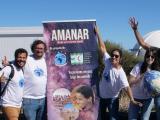
|
20/06/2023
El proyecto Amanar acerca un año más la ciencia a jóvenes saharauis en España El Proyecto Amanar, creado en 2019 con el objetivo de inspirar a través de la astronomía a las niñas y niños procedentes de los campos de refugiados saharauis cerca de la ciudad de Tinduf (Argelia), vuelve en una nueva edición en verano de 2023 |
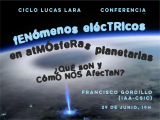
|
29/06/2023 - 19:00
Fenómenos eléctricos en atmósferas planetarias: ¿Qué son y cómo nos afectan? Aunque las investigaciones sobre la naturaleza eléctrica de la atmósfera terrestre arrancan a mediados del siglo XVIII, con las primeras aportaciones sobre la electricidad de las tormenta realizadas por Benjamín Franklin entre 1749 y 1752, a día de hoy persisten muchos interrogantes. Francisco Gordillo Vázquez |

|
19/10/2023 - 17:00
SO Webloquium: Feeding and Feedback: How to Make a Starburst and What that Means for the Host Galaxy The cycle of star formation governs the evolution of galaxies. In some local galaxies, the star formation rate in their centers are much higher than other normally star-forming galaxies and may be more similar to galaxies at earlier cosmic times. I present observational results from two archetypal nearby starburst galaxies: NGC253 and M82. First, I will discuss how gas flows to the center of NGC253 along its bar to fuel the extreme burst of... Dr. Rebecca C. Levy |

|
14/06/2023
El exoplaneta LP 890-9 c, un laboratorio para distinguir gemelos distantes de Venus y la Tierra El Instituto de Astrofísica de Andalucía (IAA-CSIC) participa en el desarrollo de un modelo climático global en 3D del planeta extrasolar LP 890-9 c. Estos modelos resultan esenciales para analizar los exoplanetas similares a la Tierra, así como para estudiar su evolución |

|
23/11/2023 - 12:30
SO Colloquium: The transition between super-Earths and sub-Neptunes: Interior and atmosphere modelling of the low-mass planet population Low-mass exoplanets are showing a diversity in their densities, ranging from silicate-dominated super-Earths to volatile-rich sub-Neptunes. We have developed a coupled interior-atmosphere model that estimates the composition and interior structure of super-Earths and sub-Neptunes assuming water and CO2 atmospheres. The applications of the model include the homogenous analysis of a sample of multi-planetary systems, as well as the assessment of... Dr. Lorena Acuña |

|
26/10/2023 - 12:30
SO Colloquium: Multi-fluid solar chromosphere The solar chromosphere is the boundary layer between the interior and exterior of the Sun, routing the origins of the coronal heating. New large-aperture solar telescopes, such as the future 4-meter European Solar Telescope or American DKIST, have among their primary focus observations of chromospheric magnetic fields. The correct interpretation of solar data requires sophisticated theories. The solar chromosphere is made of strongly stratified... Dr. Elena Khomenko |

|
28/06/2023 - 12:30
Un universo de diversidad: historias LGTBI en el mundo de la razón y la ciencia El neurólogo Ben Barres, que murió hace unos pocos años, escribió un texto en Nature muy interesante sobre ciencia y género y en él decía: "The progress of science increasingly depends on the global community, but only 10% of the world’s population is male and caucasian. To paraphrase Martin Luther King, a first-class scientific enterprise cannot be built upon a foundation of second-class citizens." Él era transexual. El mundo de la ciencia,... Dr. Javier Armentia |

|
07/06/2023
La Fundación Española para la Ciencia y la Tecnología (FECYT) concede al IAA-CSIC financiación para cuatro proyectos divulgativos El Instituto de Astrofísica de Andalucía (IAA-CSIC) obtiene un total de 122000 euros en la Convocatoria de Ayudas para el fomento de la Cultura Científica, Tecnológica y de la Innovación 2022. Los proyectos apuestan por formatos novedosos y multidisciplinares, y abarcan propuestas de vídeo, teatro, improvisación y divulgación a pie de calle |

|
28/09/2023 - 12:30
A VLTI view of Massive Young Stellar Objects (MYSOs) The formation of massive stars, objects with masses larger than 8 times solar, is central to both stellar astronomy and galactic evolution. In recent years, significant progress has been made in understanding the formation of high-mass young stellar objects (MYSOs; i.e. M∗ ≥ 8 M⊙, Lbol ≥ 5 x 103 L⊙. The latest observational and theoretical studies present evidence that HMYSOs are born in the same way as their low-mass counterparts, via disc... Dr. Maria Koutoulaki |

|
05/03/2024 - 12:30
SO colloquium: A new digitized age of SETI – interferometric commensal observations and machine learning The search for technosignatures - remotely observable indicators of advanced extraterrestrial life - addresses one of the most profound questions in science: are we alone in the universe as intelligent life? The Breakthrough Listen program is leading the most concerted search for extraterrestrial intelligence (SETI) effort to-date through radio and optical surveys of nearby stars, nearby galaxies and the Milky Way galactic plane, thus... Dr. Cherry Ng |

|
20/07/2023 - 12:30
Near-Infrared Observations of Clustered Massive Star Formation in Outflowing Region AFGL 5180 Massive stars are significant throughout the universe, as they impact their surroundings from the early stages of their formation until they die in the form of supernova. Observations in the near-infrared (NIR) of the bright and large-scale (~pc) jets which young stars ubiquitously produce during their formation process can place important constraints on the phenomenon of massive star formation. Here, we present a detailed NIR view of the star-... Sam Crowe |
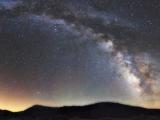
|
31/05/2023
El cielo del Geoparque de Granada, amenazado por la contaminación lumínica Un estudio, desarrollado por la Oficina de Calidad del Cielo del Instituto de Astrofísica de Andalucía (IAA-CSIC), revela un deterioro del cielo del Geoparque, así como la necesidad de implantar medidas para preservar la oscuridad nocturna |

|
30/05/2023
Dos sistemas planetarios reciben nombres españoles La Unión Astronómica Internacional designa dos estrellas, y sus planetas, con denominaciones de las culturas tradicionales vasca y balear El sistema de GJ 486 recibe los nombres ‘Gar’ y ‘Su’, y el de WASP-166 ‘Filetdor’ y ‘Catalineta’ |

|
06/06/2023 - 12:30
Aperture Masking Interferometry with the JWST In this talk, I will present how the aperture masking interferometric (AMI) mode of the JWST works. I will describe the main characteristics of this mode. In particular, I will show some of the advantages of the mode complementary to standard imaging and coronagraphic observations. I will also introduce the basic principles of the AMI data analysis, including the extraction of the interferometric observables and their interpretation with... Dr. Joel Sanchez Bermudez |

|
13/07/2023 - 11:00
Solar Orbiter: An example of an international collaboration Solar Orbiter is a space mission of international collaboration between ESA (European Space Agency) and NASA. Solar Orbiter was launched on February 9th 2020 from Cape Canaveral, FL onboard of an Atlas V 411 rocket. This event signified the success of the diplomatic, economical, technological, and scientific effort of many countries and two space agencies to achieve a common goal. The outcomes from this mission will aid to the scientific... Dr. Teresa Nieves Chinchilla |
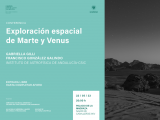
|
22/05/2023
Exploración espacial de Marte y Venus - Gabriella Gilli y Francisco González Galindo El día 22 de Mayo a las 20:00h, Gabriella Gilli y Francisco González Galindo, ambos del Instituto de Astrofísica de Andalucía (IAA-CSIC), dieron una conferencia de divulgación en el Palacio de La Madraza titulada "Exploración espacial de Marte y Venus". |

|
24/05/2023 - 26/05/2023
https://sites.google.com/view/qftcsworkshop2023/home Granada |
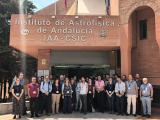
|
22/05/2023
Celebrada la primera escuela de Ciencia Abierta del Observatorio SKA En el marco del programa Severo Ochoa del IAA-CSIC, expertos internacionales han impartido durante 3 días charlas sobre iniciativas y políticas en Ciencia Abierta, así como herramientas para implementarlas |
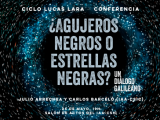
|
25/05/2023 - 19:00
¿Agujeros negros o estrellas negras? Un diálogo galileano Los agujeros negros parecen ser el resultado ineludible del colapso gravitatorio, el estadio final de la evolución estelar Julio Arrechea y Carlos Barceló |

|
17/05/2023
La primera detección en radio de una supernova de tipo Ia aporta luz, tras décadas de debate, al origen de estas explosiones Estos estallidos, que muestran una luminosidad similar en casi todos los casos, se emplean para medir distancias en el universo o para el estudio de la energía oscura. El trabajo, en el que participa el Instituto de Astrofísica de Andalucía (IAA-CSIC), muestra que la explosión se produjo en un sistema doble de estrellas en el que una enana blanca robaba material de su compañera, de tipo solar |

|
17/05/2023
Encuentran un planeta de tipo terrestre que podría hallarse cubierto de volcanes El Instituto de Astrofísica de Andalucía (IAA-CSIC) participa en el descubrimiento de un tercer planeta en torno a la estrella cercana LP791-18. Con un tamaño algo mayor que el nuestro, su interacción gravitatoria con el planeta más masivo del sistema podría generar una intensa actividad volcánica |

|
17/05/2023
La delegación de Educación, la UGR y el CSIC inauguran el Congreso del Proyecto de Iniciación a la Investigación e Innovación en Secundaria en Granada Más de 300 estudiantes de 56 institutos de Secundaria de toda la provincia han participado en experiencias reales de investigación en centros del CSIC y la UGR |

|
15/05/2023 - 19/05/2023
https://www.granadacongresos.com/els2023 Almuñecar |

|
09/11/2023 - 12:00
Studying magnetic fields, dynamics, and fundamental physics near a black hole with current and future mm-VLBI instruments The Event Horizon Telescope (EHT) has imaged the black hole shadows of the supermassive black hole at the center of the galaxy M87 (M87*) and at the center of the Milky Way (Sgr A*). Polarimetric imaging of M87* with the EHT enabled significantly stronger inferences on the black hole and accretion parameters than total intensity data alone. Geometric modeling was a central tool for studying the structure of M87* and Sgr A* in total intensity. In... Dr. Freek Roelofs |

|
21/06/2023 - 21/06/2023
https://docs.google.com/forms/d/e/1FAIpQLSf3LCWdpRFmz0JVl9GtG52KDRaGLKNEEw674XWk… Granada |

|
02/04/2024 - 12:30
Single-photon gig in Betelgeuse’s occultation In the realm of astronomical exploration, cutting-edge technologies are indispensable. Single-Photon Avalanche Diode (SPAD) sensors offer unparalleled precision, enabling the detection of individual photons with remarkable timing resolution. However, the current use of single-pixel SPAD devices poses limitations on spatially-resolved imaging in astronomy. Enter two-dimensional SPAD detectors, revolutionizing observation capabilities and enabling... Dr. Francisco Prada |

|
16/05/2023 - 12:00
Seminario Centro de Cálculo Nueva infraestructura de cálculo del IAA Centro de Cálculo |
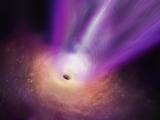
|
26/04/2023
Se fotografía por primera vez la sombra de un agujero negro junto a su potente chorro de partículas El Instituto de Astrofísica de Andalucía (IAA-CSIC) participa en la obtención de una panorámica inédita, que muestra por primera vez el agujero negro y el chorro de materia que emerge de él. Los datos revelan que el agujero negro de la galaxia M87, el primero del que se obtuvo una imagen, consume materia a un ritmo muy bajo |

|
24/04/2023 - 28/04/2023
https://www.granadacongresos.com/ctac-ctao Granada |

|
24/04/2023 - 28/04/2023
https://www.granadacongresos.com/gcw2023 Granada |

|
20/04/2023
El premio Nobel Reinhard Genzel repasa en Granada los principales hallazgos sobre agujeros negros El Instituto de Astrofísica de Andalucía (IAA-CSIC) organiza una conferencia de Reinhard Genzel, que obtuvo el premio Nobel de Física en 2020 por el descubrimiento del agujero negro del centro de la Vía Láctea. La sesión, con entrada libre hasta completar aforo, tendrá lugar en el auditorio del Parque de las Ciencias el lunes 24 de abril a las 19:30 h |

|
25/04/2023 - 12:30
SO colloquio: Theoretical models for the formation and evolution of Ultra-Cool Dwarf planetary systems Rocky planets located in the habitable zones around very low-mass objects are ideal targets for searching for life outside our Solar System. In order to better understand their formation and evolution, N-body simulations are needed. These simulations are developed assuming a star close to the substellar mass limit as the central object. The simulations include tidal and general relativistic effects that incorporate the contraction and evolution... Dr. Mariana Sánchez |

|
11/05/2023 - 12:30
Off-centre supermassive black holes in bright central galaxies Supermassive black holes (SMBHs) are believed to reside at the centre of massive galaxies such as brightest cluster galaxies (BCGs), the most massive galaxies which can be found in today's Universe. However, as BCGs experienced numerous galaxy mergers throughout their history, the central BH can be significantly kicked from the central region by these dynamical encounters. By combining the Illustris-TNG300 simulations and orbital integration... Dr. Aline Chu |
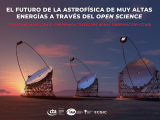
|
13/04/2023
El Futuro de la Astrofísica de muy altas energías a través del Open Science: Oportunidades con el Cherenkov Telescope Array Observatory (CTAO) “El Futuro de la Astrofísica de muy altas energías a través del Open Science: Oportunidades con el Cherenkov Telescope Array Observatory (CTAO)” El evento, que busca explorar la ciencia abierta y hablar de las oportunidades que ofrece el CTAO, se celebrará en el Salón de Actos del IAA-CSIC (Granada) el día 27 de abril de 2023 |

|
05/10/2023 - 12:30
SO colloquium: A Light in the Dark - Massive Star Birth Through Cosmic Time Massive stars are important throughout the universe, but their formation remains poorly understood. I review current understanding of how massive stars form in our Galaxy, in particular examining observational tests of various predictions of Core Accretion and Competitive Accretion theories. Finally, I discuss how massive star formation may have been different in the very early universe and how the first stars may have become supermassive... Dr. Jonathan C. Tan |

|
01/06/2023 - 12:30
SO webloquio: The impact of stellar composition: from galactic chemical evolution to planet formation The characterization of solar-type stars is fundamental for various fields in astrophysics, including exoplanet detection and the chemical evolution of our Galaxy. In particular, the determination of chemical abundances for stars at different metallicities and ages provides us with a key insight on how and when the various chemical elements were formed within the Galaxy. The chemical trends observed in different parts of the Galaxy (thin disk,... Dr. Elisa Delgado Mena |